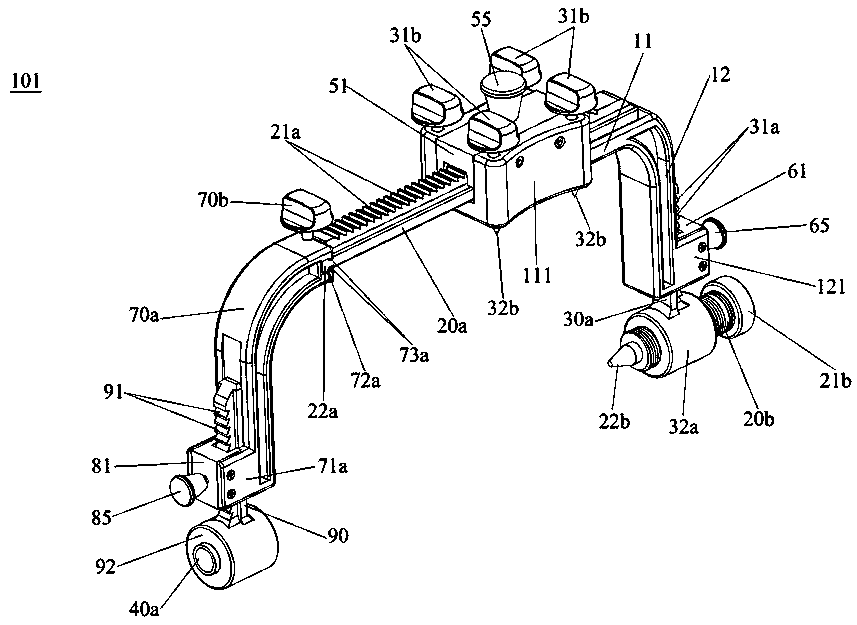Positioner for intracranial operation
A positioning device and surgical technology, applied in the field of medical equipment, can solve the problems of surgical channel deviation from the normal direction, cumbersome operation, rough positioning and orientation methods, etc.
- Summary
- Abstract
- Description
- Claims
- Application Information
AI Technical Summary
Problems solved by technology
Method used
Image
Examples
Embodiment Construction
[0031] Embodiments of the present invention will now be described with reference to the drawings, in which like reference numerals represent like elements.
[0032] see Figure 1 to Figure 3 , showing the intracranial surgery positioning device 101 of the first embodiment of the present invention, the intracranial surgery positioning device 101 of this embodiment includes a fixed arm 10, a lateral adjustment arm 20a, a longitudinal positioning arm 30a, a longitudinal positioning nail 30b, and a lateral positioning nail 20b, auxiliary positioning pin 20c and auxiliary operating mechanism (not marked in the figure), the fixed arm 10 has a horizontally arranged transverse portion 11 and a vertically arranged longitudinal portion 12, the right end of the transverse portion 11 is integrally formed on the longitudinal portion 12 The lower end; the longitudinal positioning nail 30b is adjustable in the vertical direction on the left end of the transverse portion 11, and the longitudi...
PUM
 Login to View More
Login to View More Abstract
Description
Claims
Application Information
 Login to View More
Login to View More - R&D
- Intellectual Property
- Life Sciences
- Materials
- Tech Scout
- Unparalleled Data Quality
- Higher Quality Content
- 60% Fewer Hallucinations
Browse by: Latest US Patents, China's latest patents, Technical Efficacy Thesaurus, Application Domain, Technology Topic, Popular Technical Reports.
© 2025 PatSnap. All rights reserved.Legal|Privacy policy|Modern Slavery Act Transparency Statement|Sitemap|About US| Contact US: help@patsnap.com



